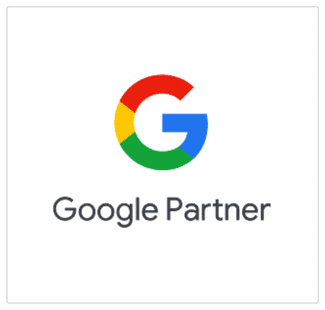The term “website” is ubiquitous nowadays. Most of us surf the Internet every day, looking for information, buying products or interacting on social networks. However, how well do we understand what a website means? If we want our business to have its own online store, what are the steps to take to make this happen? And, just as importantly, what are the costs behind building a website?
Whether you’re a budding entrepreneur, a passionate blogger or simply someone curious, this article will clarify these issues and help you understand what’s involved in the process of creating a website, from concept to completion and beyond.
What is a website?
In principle, a website is the virtual equivalent of a physical shop.
If you want to open a shop in a shopping mall, you need to rent a commercial space and invest in setting up the shop. In the case of a website, the process is the same: you rent the virtual space and invest in the “design” of the website to attract the attention of customers and generate sales.
Now let’s take a practical look at what a website is.
Technically, a website is a set of publicly accessible web pages hosted on a web server. These pages are interconnected by links and can contain text, images, video and other media elements, as well as scripts and styles to enhance interactivity and design.
There are numerous technologies and programming languages used in website development, including HTML, CSS, JavaScript, PHP, Python or Ruby. These technologies allow the creation of dynamic websites with advanced functionality and attractive designs.
Complicated work, what more.
Fortunately, however, there are now faster, simpler and more cost-effective alternatives for creating a website, as you’ll see later in the article.
Until then, you should know that websites can serve different purposes, including:
- Information: sites that provide information on a variety of topics (e.g. Wikipedia)
- Commercial: sites that sell products or services (e.g. Amazon)
- Social: sites that allow interaction between users (e.g. Facebook)
- Educational: sites used for training and learning (e.g. Udemy)
- Entertainment: sites that offer entertaining content such as games, videos or music (e.g. YouTube)
Most often, users access websites using a web browser, such as Google Chrome, Mozilla Firefox, Safari, or Microsoft Edge.
That’s why, in addition to the Web Development component, creating a website requires other specialised knowledge, such as Web Design, User Experience and User Interface, Copywriting or SEO (search engine optimisation) services, which you need to tick the following performance criteria:
- With SEO optimization services, your website will be displayed prominently in front of potential customers when they search the search engine for the products or services you sell.
- With the help of copywriting services, you will make sure that visitors to your site will clearly understand where they are and what benefits your products or services offer.
- With Web Design, UX and UI services, you’ll ensure your customers have a fast and predictable website browsing experience, thus optimising the conversion process and, by extension, sales.
How much does it cost to create a website?
The cost of creating a website can vary significantly depending on a number of factors, including the complexity of the site, desired functionality, platform used, design, content and any additional costs such as web hosting, domain name or maintenance.
Here are some basic points to evaluate the cost of a website:
Type of website
- Personal website or blog: If you use platforms such as WordPress.com, Blogger or Tumblr, you can even start for free or at low cost, depending on customizations and features.
- Business website: Costs start from a few hundred to thousands of euros or more, depending on complexity and functionality.
- Online shop: Platforms such as Shopify, WooCommerce for WordPress or Magento can have variable costs, but for a more sophisticated online shop costs can quickly reach thousands of euros.
Design and development
- Free templates or themes: some platforms offer free themes, but these can be limited in terms of customisation.
- Premium themes: these can cost between €20 and €200, or more.
- Custom design: if you hire a designer or web design agency, costs can range from a few hundred to tens of thousands of euros depending on complexity.
Features and extensions
Many platforms have free plugins or extensions, but if you need premium features, these can cost from 20 to 500 euros or more.
Web hosting and domain names
Hosting is basically renting virtual space on a dedicated server, which acts as storage space for the site’s memory (measured in megabytes), and can range from a few euros per month for shared hosting (shared with other platforms), to hundreds or thousands of euros for dedicated or cloud servers.
Besides hosting, the domain is another vital element in the process of creating a website. Purchasing a domain is done on a recurring payment basis from specialised websites and can generally cost between 10 and 20 euros per year, but can be much more expensive for premium or particularly popular domains.
Maintenance and updates
A website may require regular updates, backups, security and other maintenance, processes which often need to be carried out by a specialised team such as the web design and development agency specialists who were involved in the construction of the website, and in this case the costs can be recurring.
Content
Depending on the graphic complexity of the site, and the quality of the visual and navigational experience you wish to display on the site, you may find it necessary to hire copywriters, graphic designers, photographers or videographers, which will add additional costs to the overall cost of the web platform.
Search Engine Optimisation (SEO)
If you want professional website optimization services, these will of course have an additional cost, both in the On-Page SEO stage (the actual optimization of the website performance) and Off-Page SEO (link building and other strategies to increase the authority of the website in order to target the top positions in Google results, on keywords relevant to the specifics of your business and offerings).
The website is ready. Am I ready to sell?
Not really. After the website is finally ready, the next step is online promotion to increase the visibility of the site.
When you have a physical store, you either place it in a high traffic area or you’re looking to let people know about your store, so you invest in ads to try to get them into your store.
Well, the website is the equivalent of a physical store, except that positioning in a high traffic area is done through online promotion campaigns via Google Ads, and tactics to increase visibility can be done through dedicated campaigns on social platforms such as Facebook, Instagram, TikTok or LinkedIn.
Note that all costs expressed so far, both in the website creation and promotion stages, are estimates and prices may vary depending on the region, specific requirements and industry changes.
For an exact cost, it is best to contact an agency that specialises in website creation, or a marketing agency that offers the full package of web development and online promotion services, as we do.
Let’s talk! Contact us today and request a chat with re7consulting agency specialists to see how we can turn your business plans into a successful project. Are you from Bucharest? We are also a marketing agency in Bucharest, so we invite you to a face-to-face meeting.







